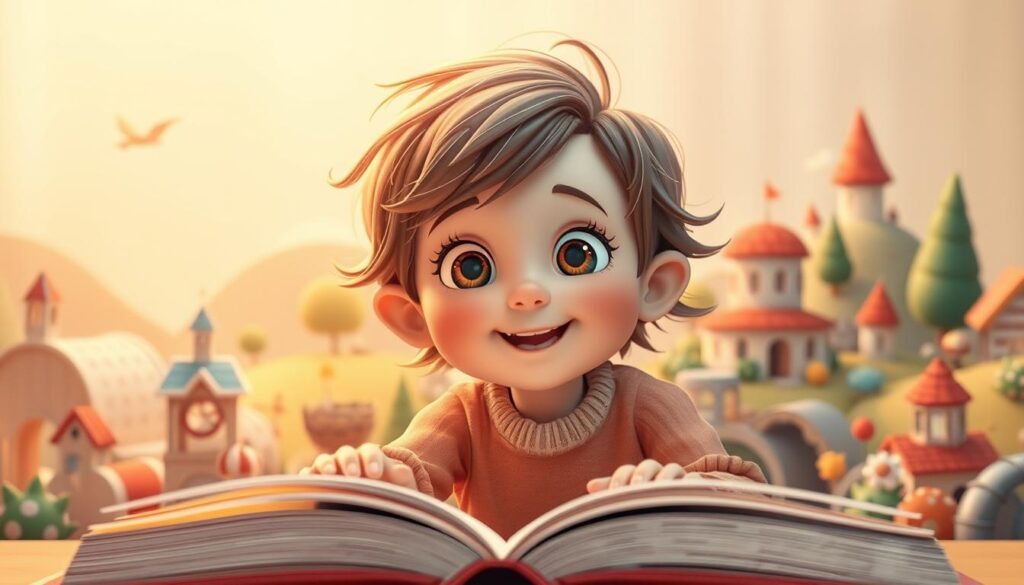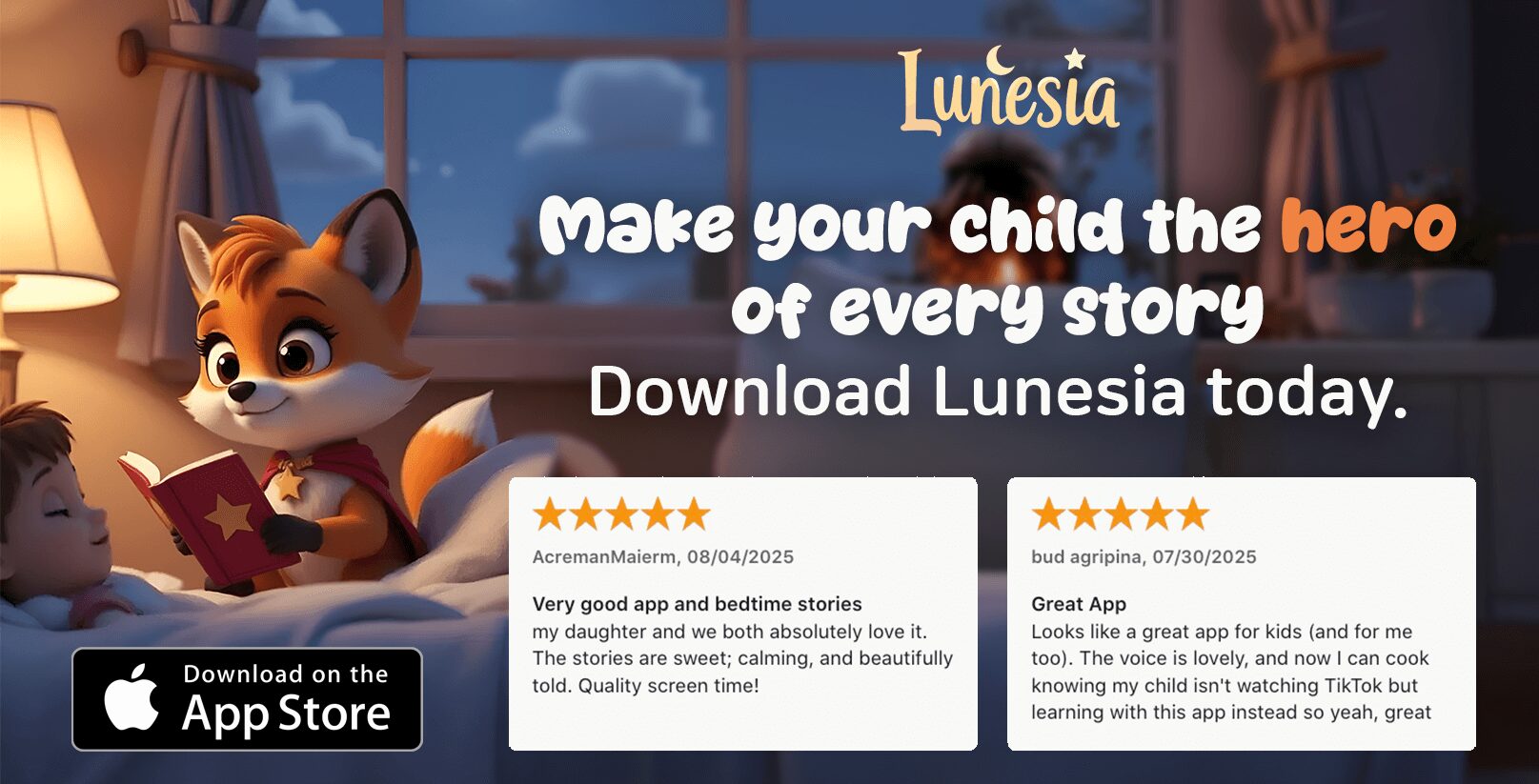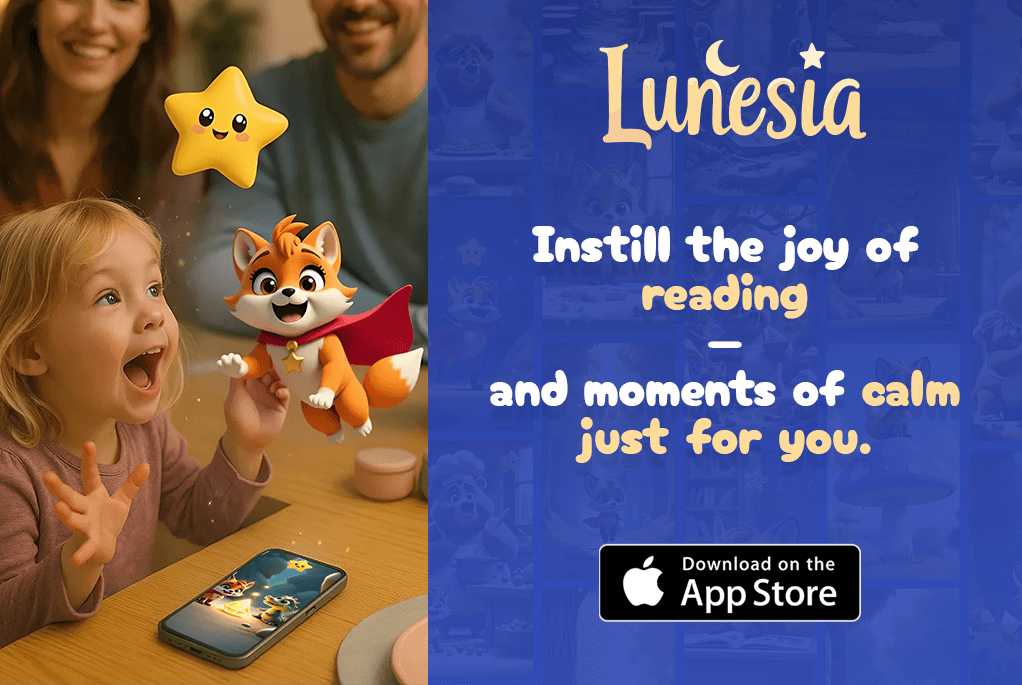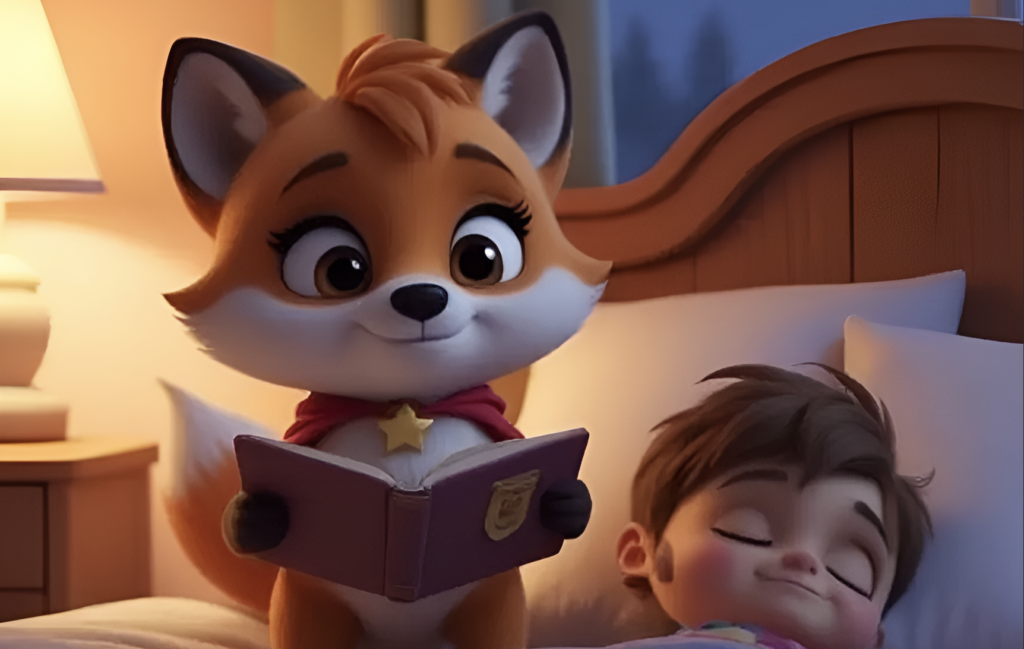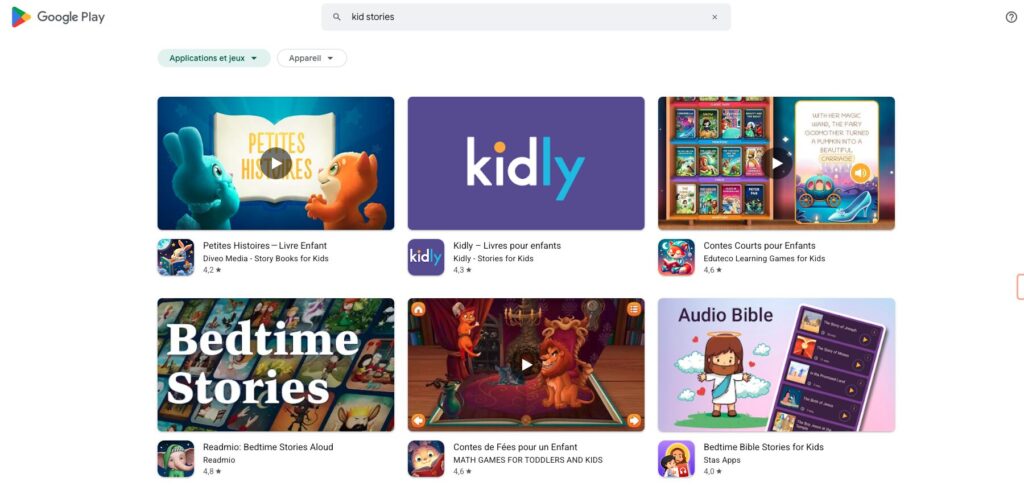When I was a child, my favorite book was a colorful picture book filled with whimsical characters and vibrant scenes. I remember how the illustrations seemed to leap off the page, making the story come alive in my imagination. That’s the magic of a well-crafted illustrated book—it’s not just about the words but the art that enhances every page.
Take, for example, John Tenniel’s iconic drawings in Alice’s Adventures in Wonderland. His artwork didn’t just complement the text—it gave life to Alice, the Cheshire Cat, and the Mad Hatter. For a child, these visuals make the narrative easier to understand and far more engaging.
Illustrated stories are more than just reading material. They’re tools that spark creativity, build emotional connections, and foster a love for stories. In the next sections, we’ll explore how combining art and words can transform your child’s learning experience. Let’s dive in!
Introduction to Illustrated Stories and Their Impact
From the earliest cave paintings to modern-day children’s literature, art has always been a powerful storytelling tool. For young readers, illustrations do more than just decorate a page—they bring the narrative to life. Combining words with visuals creates a richer, more engaging experience that helps children understand and connect with the story.
Take, for example, the timeless appeal of Where the Wild Things Are by Maurice Sendak. The vivid illustrations don’t just accompany the text—they enhance it, making the wild rumpus feel real and the emotions palpable. This blend of art and words is what makes illustrated stories so impactful for young minds.
Research shows that 70% of children who engage with illustrated stories show improved comprehension skills. The visuals provide context, making it easier for early readers to grasp complex ideas. They also spark creativity, encouraging children to imagine beyond the text.
Illustrated stories are more than just a book—they’re a gateway to a world of imagination and learning. They foster emotional connections, build vocabulary, and instill a lifelong love for reading. Whether it’s a classic like The Polar Express or a modern gem like The Invention of Hugo Cabret, these stories leave a lasting impression.
As we explore the benefits of illustrated stories, it’s clear that their impact goes beyond the page. They shape how children see the world, making them an essential part of early learning and development.
The Unique Appeal of Picture Books
There’s something magical about flipping through the pages of a picture book and seeing the story unfold through art. These books are more than just reading material—they’re visual journeys that ignite a child’s imagination. The combination of vibrant illustrations and engaging narratives makes them a favorite among young readers.
Vibrant Illustrations that Capture Imagination
One of the standout features of a picture book is its artwork. Vibrant illustrations don’t just decorate the pages—they bring the story to life. For example, Maurice Sendak’s Where the Wild Things Are uses bold, imaginative visuals to create a world that feels real and exciting. These images help children visualize the narrative, making it easier to understand and remember.
Chris Van Allsburg’s The Polar Express is another great example. His detailed, dreamlike illustrations transport readers to a magical winter wonderland. This kind of visual storytelling sparks creativity and encourages children to think beyond the text.
Engaging Narratives for Early Readers
Picture books also excel at telling stories that captivate young minds. The narratives are often simple yet powerful, making them perfect for early readers. For instance, The Polar Express combines a heartwarming story with stunning visuals, creating an unforgettable reading experience.
These books are designed to keep children hooked. They use relatable themes, rhythmic language, and unexpected twists to maintain interest. This combination of art and storytelling fosters a love for reading that can last a lifetime.
Early exposure to child books like these can shape a child’s perspective and encourage lifelong reading habits. Whether it’s the whimsical worlds of Maurice Sendak or the enchanting tales of Chris Van Allsburg, picture books leave a lasting impression on young readers.
The Transformative Power of Illustrated Books
The magic of an illustrated book lies in its ability to transform words into vivid worlds. For children, these books are more than just stories—they’re tools that shape how they see and understand the world around them. When art and text come together, they create a powerful experience that goes beyond traditional storytelling.
Research shows that children who engage with illustrated stories show a 50% higher likelihood of developing a lifelong love for reading. The visuals provide context, making it easier for young minds to grasp complex ideas. They also spark creativity, encouraging children to imagine beyond the text.
Take, for example, The Polar Express by Chris Van Allsburg. His dreamlike illustrations don’t just accompany the text—they transport readers to a magical winter wonderland. This kind of visual storytelling helps children connect emotionally with the narrative, making the experience unforgettable.
Illustrated books also play a crucial role in cognitive and emotional development. Studies indicate that visual narratives improve prediction and inference skills by 40%. They help children understand character emotions, plot sequences, and even moral lessons more effectively.
“Powerful illustrations can have an impact that takes on a life of its own, transforming how children perceive narratives.”
These books are more than entertainment—they’re tools for growth. They foster empathy, build vocabulary, and encourage critical thinking. By blending art and text, illustrated books change the way children approach learning and storytelling.
So, the next time you pick up an illustrated book, remember: it’s not just a story. It’s a gateway to imagination, learning, and emotional connection. Let’s embrace their transformative power and watch our children grow.
Top Illustrated Stories: A Listicle of Favorites
Some stories stay with us forever, their images etched in our minds. These tales, brought to life by masterful artists, have charmed millions of readers worldwide. Let’s explore a few favorites that continue to inspire and captivate young minds.
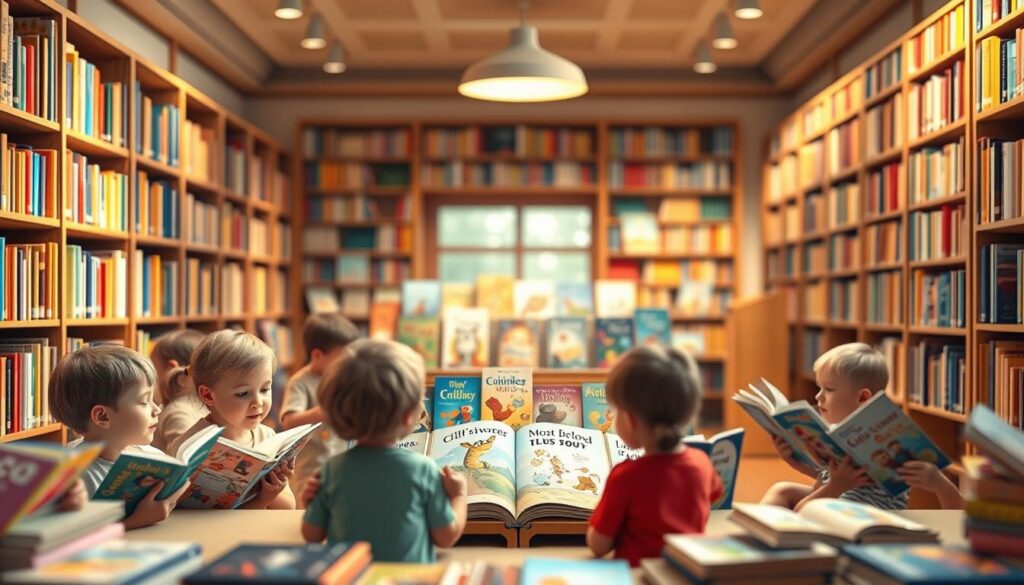
Where the Wild Things Are by Maurice Sendak
Where the Wild Things Are is a timeless classic by Maurice Sendak. Its bold, imaginative visuals bring Max’s adventures to life, making the wild rumpus feel real. With a 4.2 Goodreads rating, this story teaches children about emotions and the power of imagination.
Sendak’s creative approach blends whimsical art with a heartfelt narrative. It’s no wonder this wild thing remains a favorite among readers of all ages.
The Invention of Hugo Cabret by Brian Selznick
Brian Selznick’s The Invention of Hugo Cabret is a masterpiece of visual storytelling. Its intricate pencil drawings and cinematic style earned it a 4.1 Goodreads rating. This tale of mystery and invention encourages readers to see the world through a creative lens.
Selznick’s unique blend of art and text makes this Hugo Cabret story unforgettable. It’s a perfect example of how illustrations can elevate a narrative.
The Polar Express by Chris Van Allsburg
The Polar Express by Chris Van Allsburg is a holiday favorite with a 4.3 Goodreads rating. Its dreamlike illustrations transport readers to a magical winter wonderland. This story of belief and adventure resonates deeply with both children and adults.
Van Allsburg’s art captures the wonder of the season, making The Polar Express a cherished part of many families’ traditions.
These stories remind us of the power of art in storytelling. Whether it’s the wild adventures of Max, the mysteries of Hugo, or the magic of the North Pole, these tales leave a lasting impression. They’re more than just stories—they’re experiences that shape how we see the world.
Blending Art and Storytelling for Child Development
Blending art and storytelling isn’t just about creating a pretty picture—it’s about shaping young minds. When words and visuals come together, they create a powerful tool for learning and growth. For children, this combination is more than entertainment; it’s a way to explore the world and understand themselves better.
Enhancing Vocabulary and Imagination
One of the most significant benefits of combining art and storytelling is its impact on vocabulary. When a child sees a picture of a dragon or a castle, they’re more likely to remember the word associated with it. This visual connection makes learning new words easier and more fun.
Research shows that children who engage with books rich in illustrations have a 40% higher vocabulary retention rate. The visuals act as clues, helping them understand and remember complex ideas. This not only boosts their language skills but also sparks their imagination, encouraging them to think beyond the text.
Fostering Emotional and Visual Literacy
Illustrated stories also play a crucial role in emotional development. When a child sees a character’s facial expressions or body language, they learn to interpret emotions. This helps them develop empathy and understand social cues, which are essential skills for life.
Visual literacy is another key benefit. By analyzing the details in the artwork, children learn to observe and interpret the world around them. This skill enhances their ability to understand narratives and even solve problems creatively.
“Art and storytelling together create a language that speaks directly to a child’s heart and mind.”
Here are some actionable tips to make reading sessions more enriching:
- Ask your child to describe what they see in the pictures. This encourages observation and vocabulary building.
- Discuss the emotions of the characters. This helps develop emotional intelligence.
- Encourage them to predict what happens next. This fosters critical thinking and imagination.
By blending art and storytelling, we’re not just teaching children to read—we’re helping them grow into curious, empathetic, and creative individuals. So, the next time you pick up a book, remember: it’s more than a story. It’s a tool for development and a gateway to endless possibilities.
Award-Winning Titles and Their Impact on Readers
Awards in children’s literature are more than just accolades—they’re a stamp of quality and trust. When a book receives recognition from prestigious institutions like the New York Times or the New York Public Library, it instantly gains credibility. For parents, these awards serve as a reliable guide in choosing the best stories for their children.
Take, for example, The Lion & the Mouse by Jerry Pinkney. This Caldecott Medal-winning title is a masterpiece of visual storytelling. Its detailed illustrations and heartfelt narrative have made it a favorite among young readers and parents alike. Awards like these not only celebrate excellence but also ensure that the story reaches a wider audience.
Recognitions from the New York Times and Public Libraries
Institutions like the New York Times and public libraries play a crucial role in highlighting exceptional titles. Their annual lists and awards often become a go-to resource for parents seeking quality literature. For instance, The Very Hungry Caterpillar and Goodnight Moon have both been celebrated for their timeless appeal and educational value.
These recognitions don’t just boost a book’s popularity—they also set a standard for what makes a great children’s story. Parents can trust that award-winning titles have been vetted for their literary and artistic merit.
How Awards Influence Reading Choices
Awards influence reading choices by providing a benchmark for quality. When a person sees a Caldecott or Newbery Medal on a cover, they know it’s a book worth exploring. This trust is especially important for parents who want to ensure their children are exposed to enriching and age-appropriate content.
Here’s a quick look at some award-winning titles and their impact:
| Title | Award | Impact |
|---|---|---|
| The Lion & the Mouse | Caldecott Medal | Celebrated for its stunning illustrations and universal themes. |
| The Very Hungry Caterpillar | Multiple Awards | Teaches counting and days of the week in an engaging way. |
| Goodnight Moon | New York Public Library’s Top Pick | A bedtime classic that soothes and comforts young readers. |
These titles remind us that awards are more than just honors—they’re a way to ensure that the best stories reach the right audience. So, the next time you’re choosing a book, look for those award stickers. They’re a sign of a story that’s worth sharing.
Exploring Historical Masterpieces in Illustration
Throughout history, art and storytelling have intertwined to create timeless masterpieces. From the 19th century to today, these works have shaped how we perceive narratives and connect with characters. Let’s take a journey through the Golden Age of Illustration and discover the enduring classics that continue to inspire.
The Golden Age of Illustration
The late 19th and early 20th centuries marked the Golden Age of Illustration. This era saw the rise of artists who transformed the way stories were told. Pioneers like Arthur Rackham and Edmund Dulac brought fairy tales to life with intricate, imaginative visuals.
Their work wasn’t just decorative—it was integral to the storytelling process. For example, Rackham’s illustrations for Alice’s Adventures in Wonderland added depth and whimsy to the narrative. This period laid the foundation for modern illustration techniques.
Enduring Classics and Diary-Style Picture Books
Some works from this era have become timeless classics. Beatrix Potter’s The Tale of Peter Rabbit is a prime example. Her delicate watercolors and charming characters continue to captivate readers of all ages.
Another unique style that emerged was the diary-style picture book. These works, like The Country Diary of an Edwardian Lady, combined personal reflections with beautiful illustrations. They offered a glimpse into the century’s culture and artistic trends.
Here’s a quick look at some notable works from this period:
| Title | Artist | Impact |
|---|---|---|
| The Tale of Peter Rabbit | Beatrix Potter | Revolutionized children’s literature with its charming illustrations. |
| The Country Diary of an Edwardian Lady | Edith Holden | Combined diary entries with detailed botanical illustrations. |
| Alice’s Adventures in Wonderland | Arthur Rackham | Set a new standard for visual storytelling in classic literature. |
These historical works didn’t just entertain—they shaped the way we approach storytelling today. By blending art and narrative, they created a legacy that continues to inspire new generations of artists and readers.
Creative Ways to Enjoy Illustrated Books at Home
Bringing stories to life at home can be a magical experience for both you and your child. With a little creativity, you can turn reading sessions into interactive adventures that spark imagination and build lasting memories. Here are some practical ideas to make the most of your book time.
Interactive Story Sessions
One of the best ways to engage your child is through interactive story sessions. Instead of just reading the words, encourage them to point out details in the pictures or act out the plot. This makes the story more immersive and helps them connect with the narrative.
For example, if you’re reading a story about animals, ask your child to mimic the sounds or movements of the characters. This not only makes the session fun but also enhances their understanding of the story.
Art Projects and Visual Cues
Integrating art projects into your reading routine can take the experience to the next level. After finishing a book, encourage your child to draw their favorite scene or create a collage inspired by the story. This helps them process what they’ve read and express their creativity.
You can also use visual cues like props or costumes to bring the story to life. For instance, if you’re reading a fairy tale, dress up as the characters and act out the scenes together. This adds a playful element to the activity.
Daily Reading Routines
Making reading a part of your daily routine ensures consistency and builds a love for stories. Set aside a specific time each day for reading, whether it’s before bed or during a quiet afternoon. This creates a sense of anticipation and makes the activity special.
To keep things fresh, rotate between different types of books. Include a mix of classics, modern titles, and wordless picture books to cater to your child’s interests and reading level.
Community-Inspired Ideas
Drawing inspiration from community resources can add variety to your sessions. Websites like Goodreads offer lists of recommended titles and creative activities shared by teachers and parents. These ideas can help you plan engaging sessions that go beyond traditional reading.
For example, some parents suggest creating a “story jar” where your child picks a book at random each day. This adds an element of surprise and keeps the activity exciting.
With these simple adjustments, you can transform reading into a fun, interactive experience that your child will look forward to every day. Remember, it’s not just about the story—it’s about the memories you create together.
Tips for Parents to Select the Best Picture Books
Choosing the right picture book for your child can feel overwhelming with so many options available. As a parent, you want to pick a book that not only entertains but also supports their growth. Here’s how to make the best choice and turn reading into a meaningful experience.
Choosing Age-Appropriate Selections
Start by considering your child’s age and developmental stage. For toddlers, board books with simple words and bold images are ideal. As they grow, you can introduce more complex narratives with detailed illustrations. Authors like Kate DiCamillo and Lane Smith create stories that resonate with different age groups, making it easier to find the perfect fit.
Look for themes that match your child’s interests. If they love animals, a book about a curious plant or a mischievous pet might captivate them. Award-winning titles, such as The Invention of Hugo Cabret, often combine engaging stories with stunning visuals, making them a great choice for older kids.
Implementing Interactive Reading Strategies
Interactive reading can transform story time into a fun and educational activity. Ask your child questions about the pictures or encourage them to predict what happens next. This not only boosts comprehension but also keeps them engaged.
Here are some strategies to try:
- Act out scenes from the book to make the story come alive.
- Discuss the emotions of the characters to build empathy.
- Encourage your child to retell the story in their own words.
Authors like Kate DiCamillo often include rich details in their narratives, making it easy to spark conversations. Similarly, Lane Smith’s playful illustrations invite children to explore the story beyond the text.
By carefully selecting age-appropriate books and using interactive strategies, you can create a reading routine that nurtures your child’s love for stories. Remember, the right book can open doors to imagination and learning.
Utilizing Digital and Community Resources
Discovering new stories has never been easier with the help of digital tools and communities. Platforms like Goodreads and online forums offer a wealth of resources to help you find the perfect book for your child. These tools not only save time but also provide insights from other parents and readers.
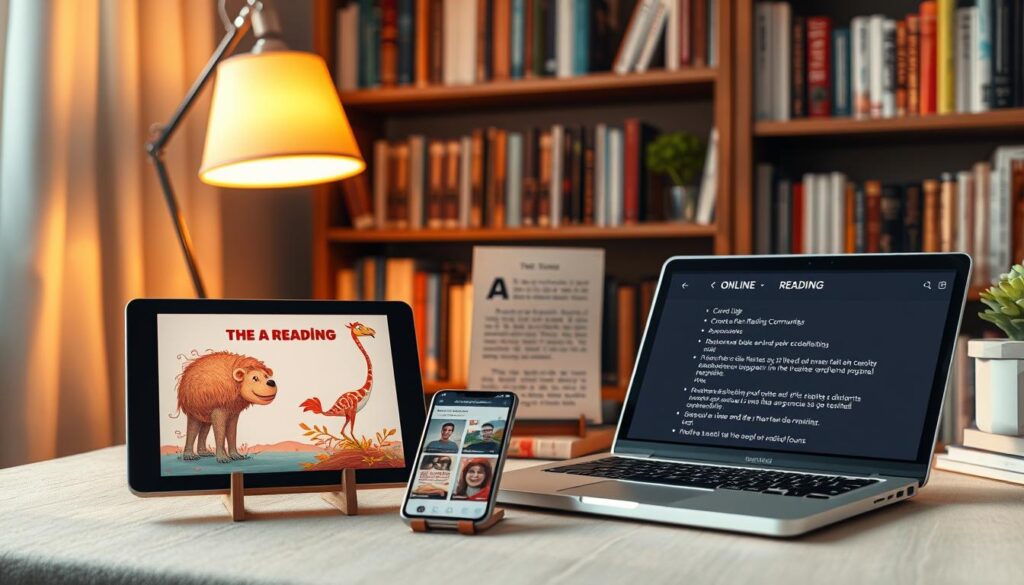
Leveraging Goodreads and Online Recommendations
Goodreads is a treasure trove for book lovers. Its user-generated lists and ratings make it simple to discover new titles. For example, searching for “The Invention of Hugo Cabret” or “The Polar Express” by Chris Van Allsburg will yield detailed reviews and recommendations.
These lists are curated by real persons who share their experiences and insights. This makes it easier to choose age-appropriate and engaging stories for your child. Plus, you can join groups and discussions to stay updated on the latest trends in children’s literature.
Benefits of Online Communities
Online communities play a significant role in shaping reading choices. Platforms like Goodreads and Facebook groups allow you to connect with other parents and educators. They share curated lists, tips, and strategies to make reading more enjoyable for kids.
Reading user ratings and reviews can also help you make informed decisions. For instance, feedback on “The Invention of Hugo Cabret” highlights its intricate illustrations and engaging narrative. Similarly, reviews of Chris Van Allsburg’s works emphasize their timeless appeal.
Tools and Resources for Continual Recommendations
Digital tools like Goodreads offer features to keep your reading journey dynamic. You can create personalized lists, track your progress, and receive tailored recommendations. This ensures you always have fresh and exciting stories to explore.
Here’s a quick overview of some popular resources:
| Resource | Features | Benefits |
|---|---|---|
| Goodreads | User-generated lists, reviews, and groups | Helps discover new titles and connect with communities |
| Facebook Groups | Parent and educator discussions | Provides curated lists and practical tips |
| Online Forums | Detailed feedback on specific books | Offers insights into age-appropriate and engaging stories |
By leveraging these digital and community resources, you can transform your child’s reading experience. Join these platforms today and discover a world of stories waiting to be explored.
The Role of Illustrations in Boosting Literacy Skills
Visual storytelling has the power to transform how children engage with narratives. High-quality illustrations in a book do more than just catch the eye—they enhance comprehension, build vocabulary, and foster a love for reading. For young readers, these visuals act as a bridge between words and understanding, making complex ideas more accessible.
Research shows that children who interact with illustrated stories show a 40% improvement in comprehension skills. The visuals provide context, helping them connect with the narrative on a deeper level. This is especially true for early readers, who often rely on pictures to infer meaning and make sense of the story.
Developing Visual Literacy in Young Readers
Visual literacy is the ability to interpret and create meaning from images. In a book, illustrations play a crucial role in developing this skill. For example, the works of Chris Van Allsburg, like The Polar Express, use detailed visuals to convey emotions and themes. These images help children understand character motivations and plot developments, even before they fully grasp the text.
Similarly, Brian Selznick’s The Invention of Hugo Cabret blends art and narrative seamlessly. The intricate pencil drawings not only tell the story but also encourage readers to observe and interpret visual cues. This kind of engagement builds critical thinking and creativity, essential skills for lifelong learning.
Actionable Tips for Parents
Here are some practical ways to use illustrations to boost your child’s literacy skills:
- Ask your child to describe what they see in the pictures. This encourages observation and vocabulary building.
- Discuss the emotions of the characters. This helps develop empathy and emotional intelligence.
- Encourage them to predict what happens next. This fosters critical thinking and imagination.
By integrating these strategies, you can turn reading sessions into interactive learning experiences. Remember, a book is more than just words—it’s a tool for growth and discovery.
Conclusion
Every child deserves a story that sparks their imagination and nurtures their growth. Illustrated books are more than just pages—they’re tools that build vocabulary, foster empathy, and inspire creativity. By integrating these stories into your daily routine, you create lasting memories and a lifelong love for reading.
Awards like the Caldecott Medal and community insights from platforms like Goodreads help you choose the best titles. These award-winning books are trusted by parents and educators alike, ensuring quality and engagement. Curated lists make it easier to find stories that resonate with your child’s interests and developmental stage.
Remember, a great book is more than words—it’s a gateway to learning and connection. Explore historical masterpieces and modern classics to enrich your child’s world. Let’s embrace the art of storytelling and watch them grow into curious, empathetic individuals.
FAQ
Why are illustrated stories important for young readers?
Illustrated stories help capture a child’s imagination, making reading more engaging and enjoyable. They also support early literacy by combining visuals with text, which enhances comprehension and vocabulary.
What makes picture books unique compared to other types of children’s literature?
Picture books stand out because of their vibrant artwork and concise storytelling. They are designed to visually and emotionally connect with young readers, making them perfect for early learning and development.
How do illustrated books contribute to child development?
These books foster emotional and visual literacy while enhancing vocabulary and creativity. They also encourage children to explore new ideas and perspectives through engaging narratives and artwork.
Can you recommend some classic illustrated stories?
Absolutely! Some timeless favorites include *Where the Wild Things Are* by Maurice Sendak, *The Invention of Hugo Cabret* by Brian Selznick, and *The Polar Express* by Chris Van Allsburg. These titles are celebrated for their captivating stories and stunning visuals.
How do awards influence the popularity of illustrated books?
Awards like those from the New York Times or public libraries highlight exceptional titles, guiding parents and educators toward high-quality selections. They also bring attention to lesser-known gems in the world of children’s literature.
What are some tips for choosing the right picture book for my child?
Look for age-appropriate themes, engaging artwork, and relatable stories. Interactive reading strategies, like asking questions about the illustrations, can also make the experience more enriching for your child.
How can I make reading illustrated books more interactive at home?
Try creating a cozy reading nook, using expressive voices for characters, and discussing the illustrations together. These activities can make storytime a fun and memorable bonding experience.
Are there digital resources to help me find great illustrated books?
Yes! Platforms like Goodreads offer recommendations and reviews from other parents and educators. Many libraries also provide online catalogs and curated lists of award-winning titles.
How do illustrations help develop visual literacy in children?
Illustrations teach children to interpret visual cues, understand emotions, and follow storylines. This skill is essential for both reading comprehension and creative thinking.
What are some historical masterpieces in the world of illustrated books?
Classics like *The Tale of Peter Rabbit* by Beatrix Potter and *The Country Diary of an Edwardian Lady* are celebrated for their timeless artwork and storytelling. These works continue to inspire new generations of readers and artists.
